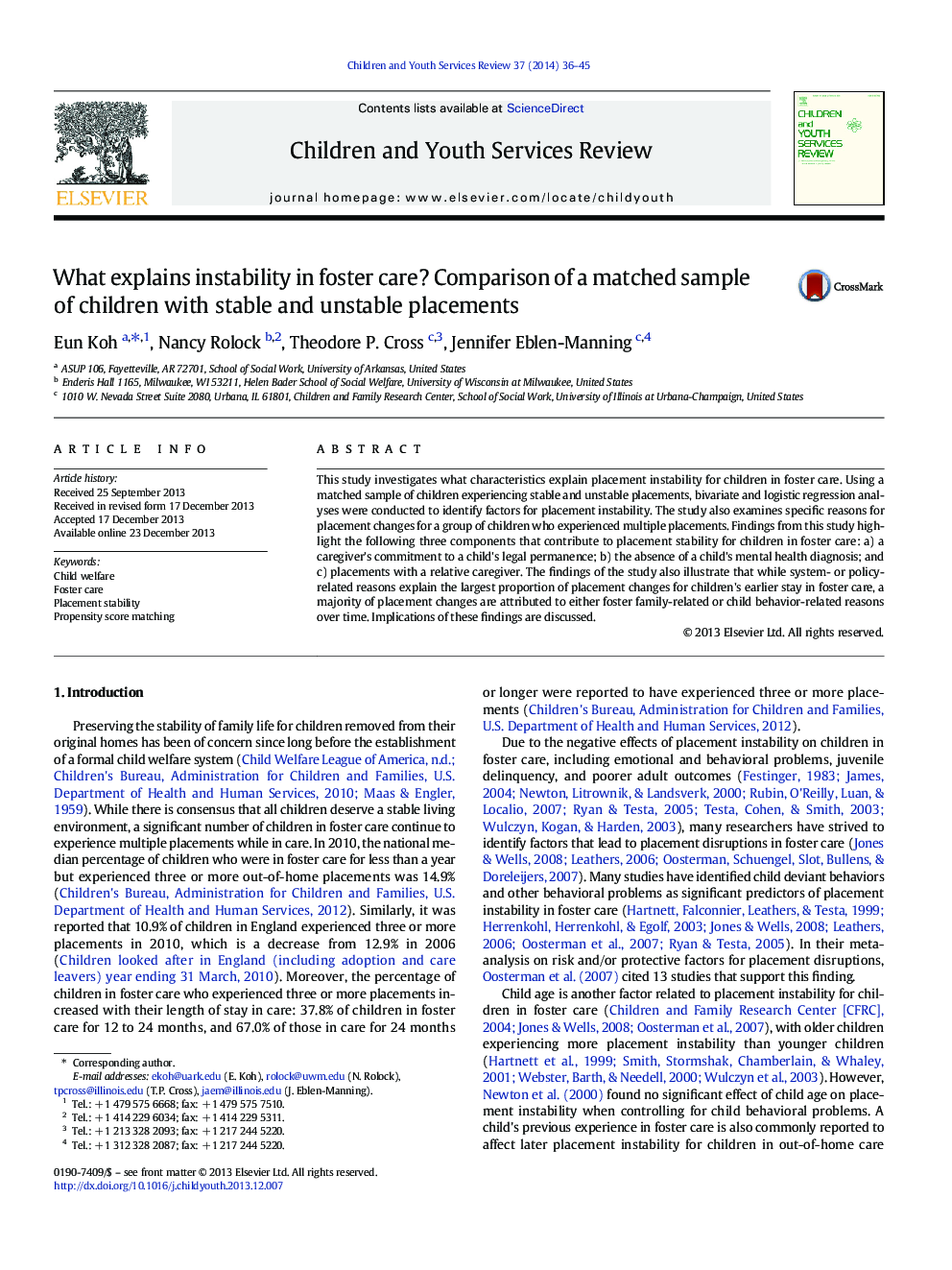| کد مقاله | کد نشریه | سال انتشار | مقاله انگلیسی | نسخه تمام متن |
|---|---|---|---|---|
| 346056 | 617796 | 2014 | 10 صفحه PDF | دانلود رایگان |
• System, caregiver, and child-related factors all contributed to placement instability.
• A caregiver's commitment to legal permanence increased placement stability.
• The absence of a child's mental health diagnosis increased placement stability.
• Placement with relative caregivers contributed to placement stability.
• Training and support for foster parents are essential to promoting stability.
This study investigates what characteristics explain placement instability for children in foster care. Using a matched sample of children experiencing stable and unstable placements, bivariate and logistic regression analyses were conducted to identify factors for placement instability. The study also examines specific reasons for placement changes for a group of children who experienced multiple placements. Findings from this study highlight the following three components that contribute to placement stability for children in foster care: a) a caregiver's commitment to a child's legal permanence; b) the absence of a child's mental health diagnosis; and c) placements with a relative caregiver. The findings of the study also illustrate that while system- or policy-related reasons explain the largest proportion of placement changes for children's earlier stay in foster care, a majority of placement changes are attributed to either foster family-related or child behavior-related reasons over time. Implications of these findings are discussed.
Journal: Children and Youth Services Review - Volume 37, February 2014, Pages 36–45
